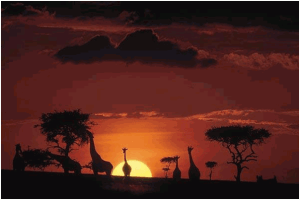
Kenya Tanzania Safari re-defined
For most tourists, an ideal Safari would go something like this: Fly in, bump around in a four wheel drive, photograph the Big Five, have a sundowner, fly back home. But there’s more to a great safari than an album full of Lion pictures. The following camps are redefining the experience, opening up previously unseen landscapes, improving conservation efforts, providing more meaningful cultural interactions, and generally making things more interesting. Mountain biking with THE wildebeest, interested?

Photogenic animals in Kenya and Tanzania tracked on foot
As tourists visit popular national parks such as Kenya’s Masai Mara and Tanzania’s Ngorongoro Crater, innovative safari companies are forging new frontiers and while they’re at it, protecting wildlife populations in previously ‘at-risk’ areas. An example is southern Tanzania’s Lukula Selous, a non-hunting camp set on a reserve zoned for big-game hunting (Mmmm, yes, shooting big game remains a legal—and lucrative—practice in Tanzania). The camp pays the Tanzanian government the hefty fees that it would otherwise not receive if they didn’t allow the land to be hunted. As a result, the camp’s eight guests have exclusive run of more than 300,000 acres of floodplains, riverine forest, the savannah, and the local wildlife population has rebounded. The project retains aspects of the hunting experience. Guests jump out of their tour car to track animals on foot, wade into rivers, and scale ridges to observe herds of buffalo. Note, the only shooting being done is of the photographic variety.
Other groups have partnered with former cattle ranches and farms to form land reserves for safari use. Starting in the early 1990s, lodges such as Ol Donyo Wuas in Kenya experimented with the practice, signing agreements with Maasai communities to lease former cattle lands for conservation. The resulting collective helped curb destructive grazing and reopened wildebeest migration routes while compensating rural Maasai families for land and for livestock lost to animal attacks.